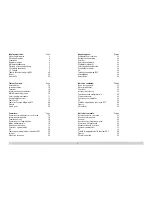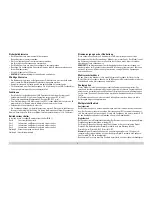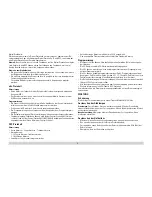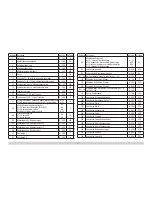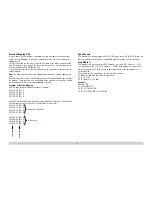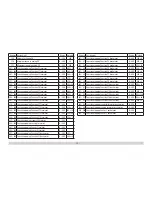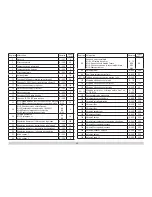
12
Function Mapping DCC
It is possible to assign functions controlled from the decoder to function buttons
of your choice (mapping). To do this an appropriate value must be entered in the
appropriate CV.
The CVs (lines) and the functions (columns) are listed in the tables on pages 42/43.
Four CVs belong to each button. For space reasons the 4 CVs were put together in
one line starting with CV 282 (Button F5).
It is basically possible to assign several functions to one button or one function to
several buttons.
Note:
The programming for function mapping should be done only by experienced
users.
Individual functions can be controlled by means of SUSI depending on the design of
the decoder. These functions can be handled by the decoder as sound. The volume
levels belonging to these functions
cannot
be changed.
Examples of Function Mapping:
AUX 2 is to be forwards and backwards on Function 3
CV 272 & CV 372 = 8
CV 273 & CV 373 = 0
CV 274 & CV 374 = 0
CV 275 & CV 375 = 0
Sound 15 is to be shifted from forwards and backwards on Function 3 to Function 8.
The existing function at Function 8 is overwritten in the process.
CV 275 & CV 375 = 0
CV 273 & CV 373 = 0
CV 274 & CV 374 = 0
CV 275 & CV 375 = 0
CV 297 & CV 397 = 0
CV 298 & CV 398 = 0
CV 299 & CV 399 = 0
CV 300 & CV 400 = 4
Speed Levels
This decoder can be operated with 14 or 28/128 speed levels (CV 29, Bit 1). Make sure
that the setting on the decoder is compatible with the settings on your controller.
Long Address
This decoder can be controlled in DCC by means of a short (CV 1, address 1 – 127)
or a long address (CV 17 & CV 18, address 1 – 10239). Both addresses are basically
always occupied. CV 29, Bit 5 is used to determine which of the two addresses is
currently valid.
The settings for the long address are calculated as follows:
X = Address / 256 (only the whole number part)
CV 17 = X + 192
CV 18 = Address – (X x 256)
Example:
Address 1324
X = 5 (1324/256=5,17)
CV 17 = 197 (5+192=197)
CV 18 = 44 (5*256=1280; 1324-1280=44)
to Function 8
away from Function 3
forwards
backwards



